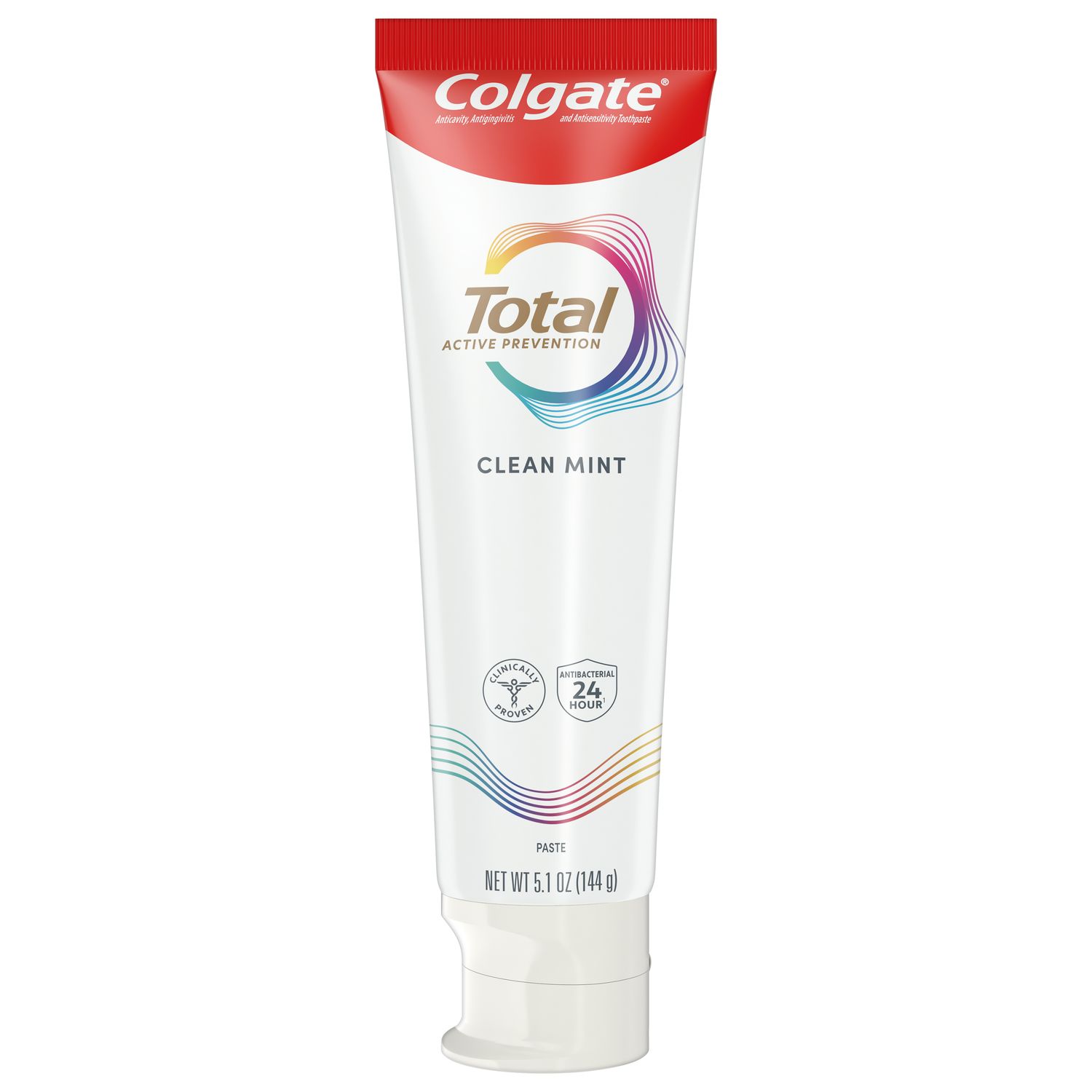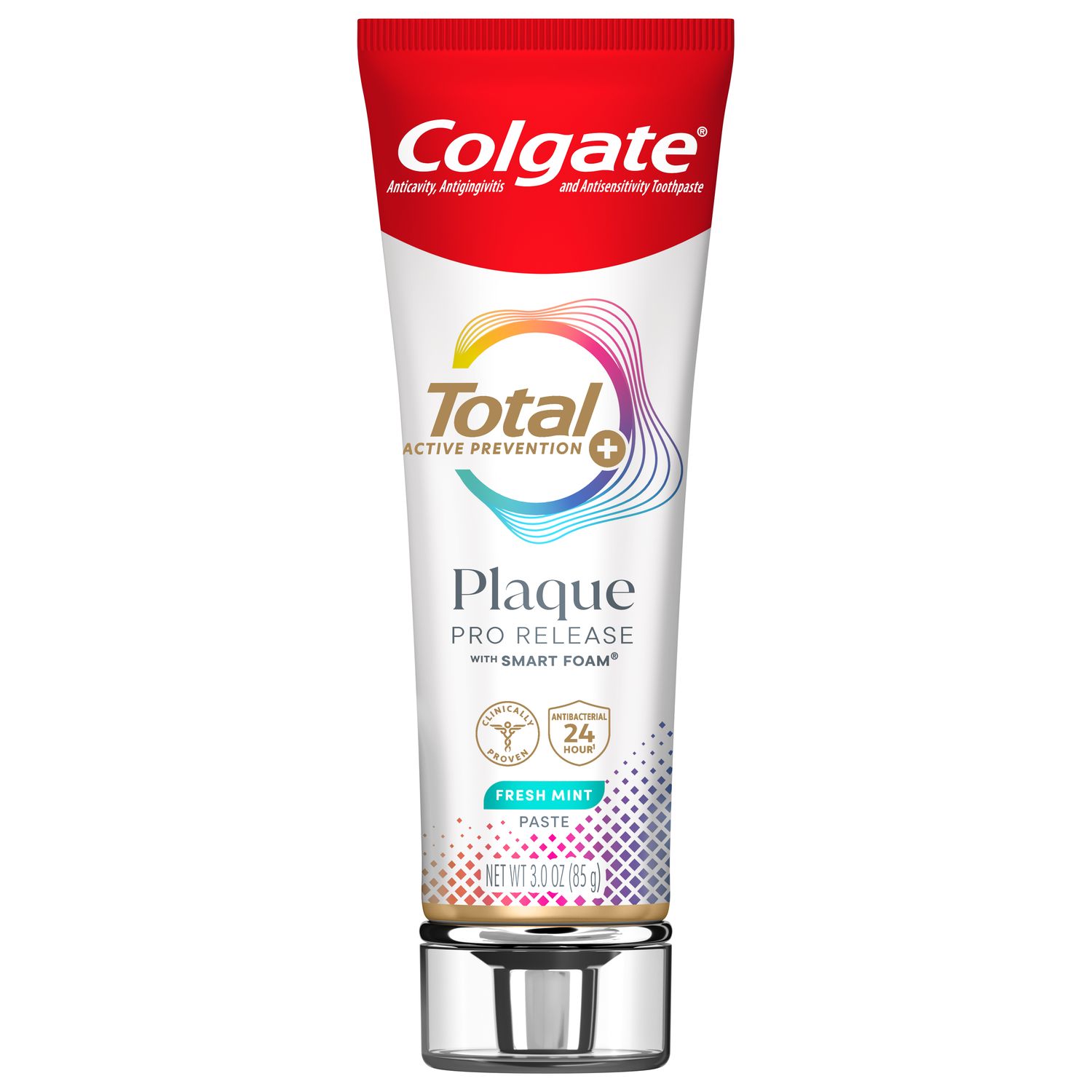
In July 2021, the global oral health community came together for the 99th General Session and Exhibition of the International Association for Dental Research (IADR). At this virtual event, Colgate was pleased to present the results of 16 leading-edge scientific studies in areas including periodontal health, esthetic dentistry and emerging antiviral technologies. Here, we highlight our key dental research findings as presented at this year’s session.
Poster #0262: Inactivation of Human Parainfluenza Virus Using Colgate Oral Care Products
Carlo Amorin Daep, Harsh M. Trivedi, and James G. Masters
This in vitro study aimed to explore the effectiveness of certain Colgate toothpastes as well as three mouthrinses containing either 0.12% chlorhexidine gluconate, 0.075% cetylpyridinium chloride (CPC) or 2% hydrogen peroxide (HP)) in inactivating the human parainfluenza virus. Viral titers were measured at baseline, after 30 seconds of exposure and after 120 seconds of exposure. The results showed that:
After 30 seconds, the dual zinc plus arginine toothpaste neutralized the virus by 99.43%. This reduction remained the same for 120 seconds of exposure.
After 30 and 120 seconds of exposure, the stannous fluoride toothpaste neutralized the virus by 99.98% and 99.99%, respectively.
After 30 second of exposure, all three mouthrinses were able to neutralize the virus by 99%, with the same reduction found at 120 seconds.
The research team was able to conclude that these toothpastes and mouthwashes are able to inactivate the human parainfluenza virus.
Poster #2065: Hydrogen Peroxide Containing Oral Care Products on Influenza Viruses
Q.W. Jiang, L.F. Jiang, Y.P. Zhang, M. Ryan, and N.H. Li
Continuing our research on the virucidal efficacy of Colgate toothpastes and mouthwashes, this in vitro study looked specifically at products containing HP and their effect on influenza viruses A/H1N1, A/H3N2 and B.
Colgate Peroxyl (1.5% HP), Optic White Mouthwash (2% HP), and Optic White Toothpaste (in 2% and 3% HP formulations) were tested against non-HP toothpaste and mouthwash placebos, with viral reductions measured after contact times of 1, 2, 4 and 6 minutes. The study found that:
Colgate Peroxyl demonstrated 95.53%, 95.53% and 93.24% reductions, respectively, for A/H1N1, A/H3N2, and B after 1 minute of contact time. After 2, 4 and 6 minutes of contact time, the reduction was greater than 99% for all three viruses.
Colgate Optic White Mouthwash demonstrated greater than 99% reduction for all three viruses at all time points.
The placebo mouthwash demonstrated no more than 16.82% reduction for all three viruses at all time points.
Colgate Optic White Toothpaste with 2% HP demonstrated 94.38%, 94.38% and 94.75% reductions, respectively, for A/H1N1, A/H3N2, and B after 1 minute of contact time. After 2, 4 and 6 minutes of contact time, reduction was greater than 99% for all three viruses.
Colgate Optic White Toothpaste with 3% HP demonstrated a more than 99% reduction for all three viruses at all time points.
The placebo toothpaste demonstrated at most a 10.87% reduction for all three viruses, achieved at 2, 4 and 6 minutes.
In conclusion, the study showed that oral care products containing hydrogen peroxide were highly effective in neutralizing the three influenza viruses.
Poster #0630: In Vitro Impact of Dual Zinc plus Arginine (DZA) on Bacterial Endotoxin (LPS)-Induced Inflammation
Victoria Carr, Dandan Chen, Harsh. M Trivedi, and Jim Masters
The objective of this study was to assess the effects of zinc oxide, zinc citrate, arginine, and a combined Dual Zinc with Arginine (DZA) formulation on bacterial endotoxin (LPS)-induced inflammation.
In human cell and tissue experiments, the researchers found that zinc citrate and dual-zinc compounds (including DZA) significantly reduced the level of prostaglandin E2 (PGE2), pro-inflammatory cytokine, tumor necrosis factor alpha (TNFa), and interleukin 8 (IL-8), all of which are associated with pro-inflammatory markers. No significant effect was observed when arginine alone was used.
This led the researchers to conclude that much of the inflammatory effect of DZA was attributable to the zinc compounds, an effect maintained in the presence of arginine, and that toothpastes containing all three display strong anti-inflammatory effects in the presence of pathogenic bacterial endotoxins.
Poster #2064: Effect of CPC Mouthrinses on Spike Protein Binding to ACE2 Receptor
Tulika Sarma, Hardeep K. Gumber, and LaTonya Kilpatrick
Pre-procedural rinsing with antimicrobial agents has been widely used as a precautionary measure in the dental environment, but there has so far been limited evidence of their efficacy in relation to SARS-CoV-2. This in vitro study looked at the efficacy of Colgate mouthrinses containing cetylpyridinium chloride (CPC) in preventing binding of the spike protein (specifically, the receptor binding domain) to human angiotensin-converting enzyme (ACE2) receptors which is the mechanism by which the virus binds to human cells and then enters them. A SARS-CoV-2 pseudotyped lentivirus was used in the study, and mouthrinses containing 1) only CPC, 2) CPC plus zinc and 3) CPC plus zinc plus fluoride were tested. ACE2-HEK293 cells were used in the study.
All tested mouthrinses were shown to prevent the virus from binding to ACE2 receptors and also to inhibit entry of the virus into ACE2-HEK cells.
Poster #2321: A Novel Enzyme Whitening Toothpaste is Safe for Enamel
Jennifer Gronlund, Catejan Dogo-Isonagie, Dennis Zhang, Prakasarao Mandadi, Suman Chopra
A novel whitening toothpaste with a patented perhydrolase enzyme formulation is known to catalyze the reaction of hydrogen peroxide and triacetin to generate peracetic acid (PAA) during toothbrushing. While the whitening efficacy of this toothpaste has been established in vitro and clinically, this study aimed to quantify PAA production. A second goal was to investigate the safety of the product on enamel, in line with the ISO 28399 criteria for tooth bleaching products.
The research team tested the surface microhardness of enamel samples before and after a period of brushing with the toothpaste. The surface morphology of the enamel before and after brushing was also evaluated, using confocal microscopy.
The toothpaste was found to generate between 578-720 ppm PAA during a two-minute brushing, an amount sufficient to deliver effective bleaching. The average surface microhardness decreased by 1.27%, well within the acceptable +/-10% range defined in ISO 28399, and confocal images showed no significant changes to the surface morphology of the enamel.
The researchers concluded that this novel perhydrolase enzyme toothpaste is both effective for whitening and safe for enamel.
Join us
Get resources, products and helpful information to give your patients a healthier future.
Join us
Get resources, products and helpful information to give your patients a healthier future.













